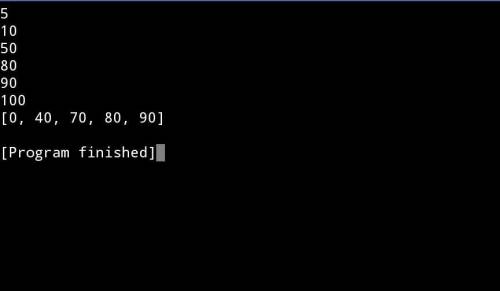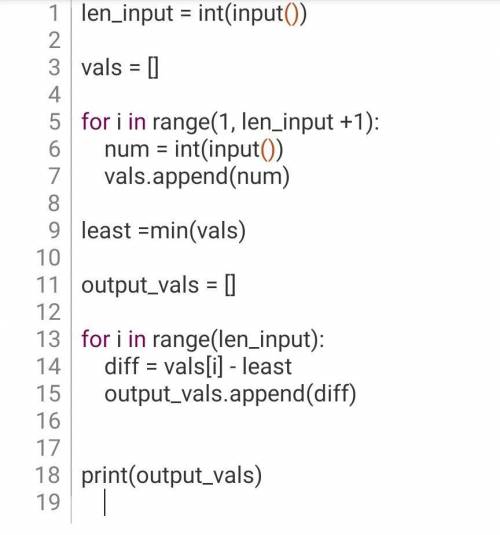
Computers and Technology, 19.10.2020 18:01, aperez4102
Adjust list by normalizing When analyzing data sets, such as data for human heights or for human weights, a common step is to adjust the data. This can be done by normalizing to values between 0 and 1, or throwing away outliers. For this program, adjust the values by subtracting the smallest value from all the values. The input begins with an integer indicating the number of integers that follow. Assume that the list will always contain fewer than 20 integers. Ex: If the input is: 5 30 50 10 70 65 the output is: 20 40 0 60 55 The 5 indicates that there are five values in the list, namely 30, 50, 10, 70, and 65. 10 is the smallest value in the list, so is subtracted from each value in the list. For coding simplicity, follow every output value by a space, including the last one.

Answers: 2
Other questions on the subject: Computers and Technology

Computers and Technology, 23.06.2019 21:30, mariah10455
Write a fragment of code that reads in strings from standard input, until end-of-file and prints to standard output the largest value. you may assume there is at least one value. (cascading/streaming logic, basic string processing)
Answers: 3

Computers and Technology, 23.06.2019 22:20, tagerryawilson6
If i uninstall nba 2k 19 from my ps4 will my career be gone forever?
Answers: 2

Computers and Technology, 24.06.2019 10:00, zlittleton2008
Which feature of a blog to restore and retrieve older post
Answers: 3

Computers and Technology, 25.06.2019 03:30, kalithekittenqueen
All nate specialties are offered at two levels, a. journeyman and master. b. installation and service. c. apprentice and journeyman. d. heating and air conditioning.
Answers: 1
Do you know the correct answer?
Adjust list by normalizing When analyzing data sets, such as data for human heights or for human wei...
Questions in other subjects:







Mathematics, 23.05.2020 04:01



Mathematics, 23.05.2020 04:01









